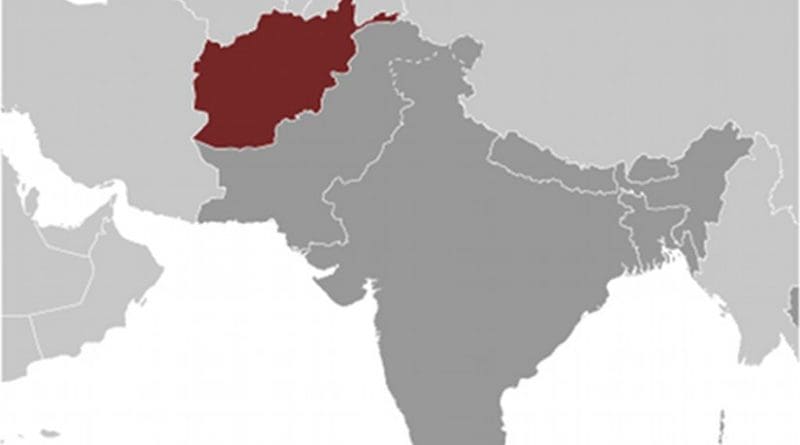New US Strategy: Afghans Losing Bargaining Power – Analysis
The cliche that the reconciliation and reintegration process in Afghanistan must be Afghan-owned and Afghan-led is losing much of its meaning with the United States revising its strategy on Afghanistan. Although, the US is now insisting on a “Fight, Talk, Build” strategy against the Taliban-led insurgents including the Haqqani Network, much of its recent negotiations with Pakistan have centred around regaining the latter’s cooperation in stabilising the Afghan conflict. The Afghan view point, as a result, is steadily becoming a casualty in this bargaining process.
A New Strategy
US Secretary of State Hillary Clinton’s description of the new strategy as “Fight, Talk and Build” is a euphemism for the desperate American attempt to draw the insurgents to the negotiation table while continuing military pressure, so that the US goal of extricating itself from the conflict by 2014 is realised. At the same time, there is enough realisation in American policy circles that the odd successes of the predator drone strikes in Pakistan’s North Waziristan area notwithstanding, military pressure alone will not be able force the insurgents to talk peace.
As a result, the revised strategy now hinges on seeking Pakistan’s cooperation in securing the objective, even while the insurgents have demonstrated no inclination to talk to the US. The insurgents stand by their condition that the US forces must completely pull out of Afghanistan before the talks.
Media reports have indicated that the US no longer wants Pakistan to mount an offensive against the Haqqani Network, a rider it had imposed for the past couple of months. On the contrary, Washington now wants the Pakistan military to simply provide intelligence about the Haqqanis and tighten border control so as to check the movement of the insurgents.
In addition, Islamabad is also being asked to do its best to deliver the Haqqanis to the negotiating table. An understanding to this effect was apparently reached during the late October 2011 visit of Secretary Clinton to Pakistan. It is quite possible that the US would consider Pakistan’s demand of a ceasefire with the insurgents as a pre-condition to the dialogue process.
Gains and Losses
Prospects for Pakistan, thus, are looking up, provided it chooses to become a part of the solution and not the problem for Afghanistan. The country now stands a chance to redeem itself and become a full-fledged part of the negotiation process. Its policy of resisting the US pressure for the past few months appears to have worked.
The fact that his country is starting to make strategic gains was evident in the statement of Pakistan President Asif Ali Zardari in Istanbul on 2 November. Displaying a new found confidence Zardari said: “The situation in the region is a very complex one … the NATO armies, the world armies have been there for the last 10 years; if it was such an easy issue they would have solved it; the fact of the matter is that Afghanistan has always been known as the graveyard of empires.”
However, one wonders if Afghan opinion has figured anywhere in the new US policy in its quest for a solution to the conflict or it is simply trying to force a solution in its own interest. Following the September 2011 killing of former President and chief of the High Peace Council Burhanuddin Rabbani by a suicide bomber, President Hamid Karzai had suspended the peace talks with the insurgents by calling it “a joke”. Although both Afghanistan and Pakistan on 1 November agreed to conduct a joint investigation into Rabbani’s assassination, Karzai continues to maintain that he “cannot keep talking to suicide bombers” until “an address for the Taliban” is found.
The Karzai administration alternatively insists that it would talk to Pakistan, which has been the sole source of problem in Afghanistan. On 2 November, Afghan Deputy Foreign Minister Jawed Ludin asked Pakistan to move beyond words and show commitment to the peace process in Afghanistan. “It’s a question of peace and security in Pakistan that’s also suffering at the hands of terrorism,” he said.
It is not clear whether the recently devised US strategy would be acceptable to President Karzai as well as the traditionally anti-Pakistan groups like the Northern Alliance and also the growing mass of anti-Pakistan civilian protesters in Afghanistan’s cities and country side.
A Policy of Compromise
To keep to the date for withdrawing its forces from Afghanistan by 2014, negotiating with Pakistan and seeking its cooperation has become a necessity for the US. However, it is also crucial that a solution to the Afghan conflict does not end up recommending the return of the insurgents into the power centres in Kabul. Not many Afghans would wish to go back to the days that the Taliban rule brought upon them between 1996 and 2001.
Afghan National Security Forces (ANSFs) need time to emerge as a force to reckon with and capable of resisting the insurgent raids. Similarly, Afghans need continued support of the international community to build their war-torn nation. The Obama administration needs to seriously reconsider its unilaterally decided drawdown date.
This article was published by S. Rajaratnam School of International Studies (RSIS), Nanyang Technological University.

